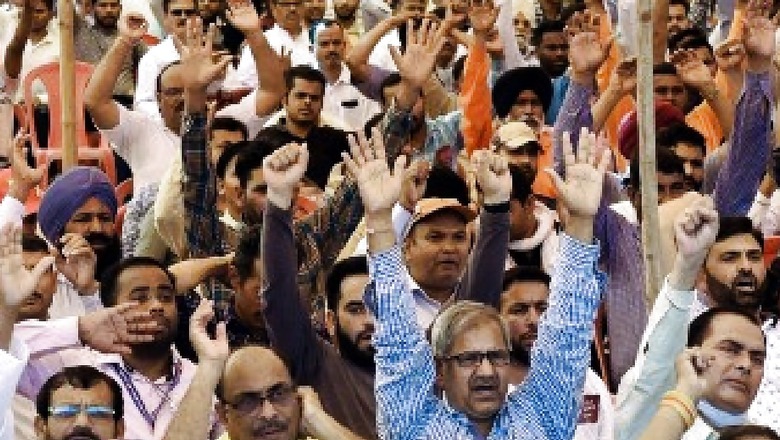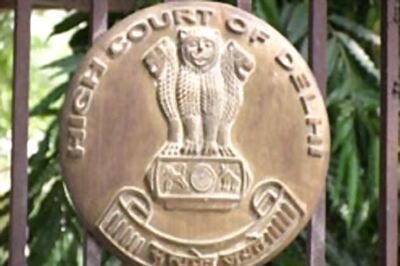
views
With the 182-member Gujarat Assembly election around the corner, both Aam Aadmi Party (AAP) and Congress are making a range of poll promises to halt the BJP’s 27-year rule in the state. One such promise that has merged as a major poll plank for both parties is the restoration of the Old Pension Scheme (OPS).
The issue also found a place in both Congress and AAP’s manifestos for the recently concluded Assembly polls in Himachal Pradesh as well.
The BJP-led NDA government discontinued the old pension scheme in December 2003, following which the new pension scheme was implemented on April 1, 2004. The move received a major backlash from government employees, who over the years have protested against it.
Now, in an attempt to bring these lakhs of government employees–who are dissatisfied with the new scheme– to its side, AAP on Sunday promised to restore OPS in Gujarat by January 31 next year if voted to power.
Earlier, Rahul Gandhi also said that Congress will bring back the old pension OPS and ensure timely promotions if it comes to power in Gujarat.
Difference Between Old And New Pension Schemes
Under the old pension scheme– also referred to as the Defined Benefit Pension System (DBPS)– government employees after retirement would receive 50 per cent of their last drawn basic pay and dearness allowance (DA) or their average earnings in the last 10 months of service, whichever is better for the employee.
On the other hand, the New Pension Scheme (NPS) is a contribution-based pension system. Under the NPS, employees are allowed to withdraw 60 per cent of the accumulated corpus contributed during their working years at the time of retirement, which is tax-free.
The remaining 40 per cent is converted into an annuatised product, which could currently provide the employee with a pension of 35 per cent of their last-drawn pay.
The NPS is applicable to all employees joining services of the central government, including central autonomous bodies (except Armed Forces) on or after January 1, 2004.
Many state governments have also adopted NPS architecture and made it mandatory for their employees to join it on or after a cut-off date.
In the case of pre-mature exit under the National Pension System, at least 80 per cent of the accumulated pension wealth of the subscriber has to be utilised for the purchase of an annuity providing the monthly pension to the subscriber and the balance is paid as a lump sum to the subscriber.
Under the scheme, subscribers can also continue to contribute to the NPS beyond his/ her retirement, up to 70 years of age, and avail additional tax benefits on the contribution.
Why Some Employees Protested Against New Scheme
Over the years, employees across the country have staged massive agitations, demanding restoration of the OPS because they believe the New Pension Scheme is not in the interest of the retiring employees. The backlash over the scheme could prove to be serious trouble for the BJP governments in both Gujarat and Himachal as the party is tip-toeing over the issue.
Already, Rajasthan and Chhattisgarh, which are ruled by Congress, and Punjab, which is ruled by AAP, have reverted to the OPS.
In Gujarat, the state government had introduced a new contributory pension scheme (NPS) for employees joining the service on or after April 1, 2005. According to the notification, it will make a matching contribution of 10 per cent of the basic pay plus dearness allowance contributed by the employees in the NPS fund.
Under the Centre’s scheme, the government will contribute 14 per cent against an employee’s contribution of 10 per cent of his/her salary and DA with effect from April 1, 2019.
After protests by employees, the state government had said the new pension will not be applicable to those employees who had joined duty before April 2005. It also promised to increase its contribution in the fund to 14 per cent from 10 per cent earlier.
The employees have staged massive agitations against the government in Gujarat while demanding restoration of the OPS because they believe the NPS is not in the interest of retiring employees.
In Himachal also, where BJP is facing anti-incumbency, there are about 2.5 lakh government employees, out of which 1.5 lakh are covered under the New Pension Scheme and demanding its withdrawal.
When confronted with the issue, Chief Minister Jairam Thakur tip-toed around the issue and said OPS is a ‘matter under consideration’ for BJP. “We’ve not announced it but we’re not shutting it down. The manner in which they’re (Congress) trying to do it, similar announcements were made by Rajasthan, Chhattisgarh 10 months ago. But nothing has been done,” he said ahead of polls in the state.
Meanwhile, Congress asserted that OPS should be implemented in the country “if not today then tomorrow”. “We’ve honesty implemented OPS in Rajasthan. Over 300 people getting benefits. HP govt must bring it. There’s anti-incumbency both in Gujarat and Himachal Pradesh,” Congress’ Gujarat in-charge and Rajasthan CM Ashok Gehlot had said.
Concerns with OPS
The main concern with OPS was that the pension liability under it remained unfunded. As per media reports, there was no corpus, specifically for pensions– which would grow continuously and could be dipped into payments.
The ‘pay-as-you-go’ scheme created inter-generational equity issues as the present generation of taxpayers had to bear the continuously rising burden of pensioners.
The OPS was also unsustainable, as the pension liabilities would keep climbing since pensioners’ benefits increased every year.
Read all the Latest Politics News here



















Comments
0 comment